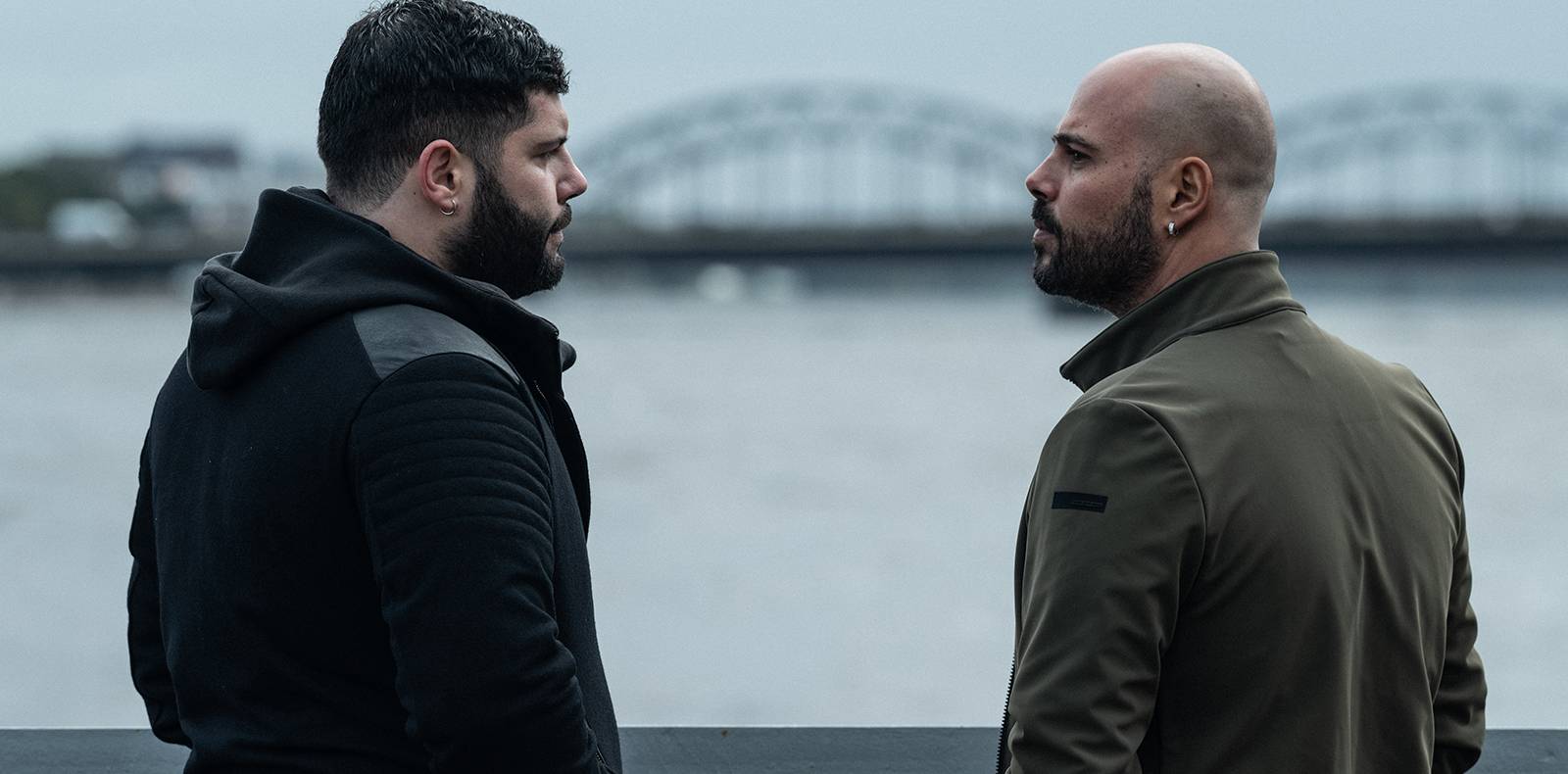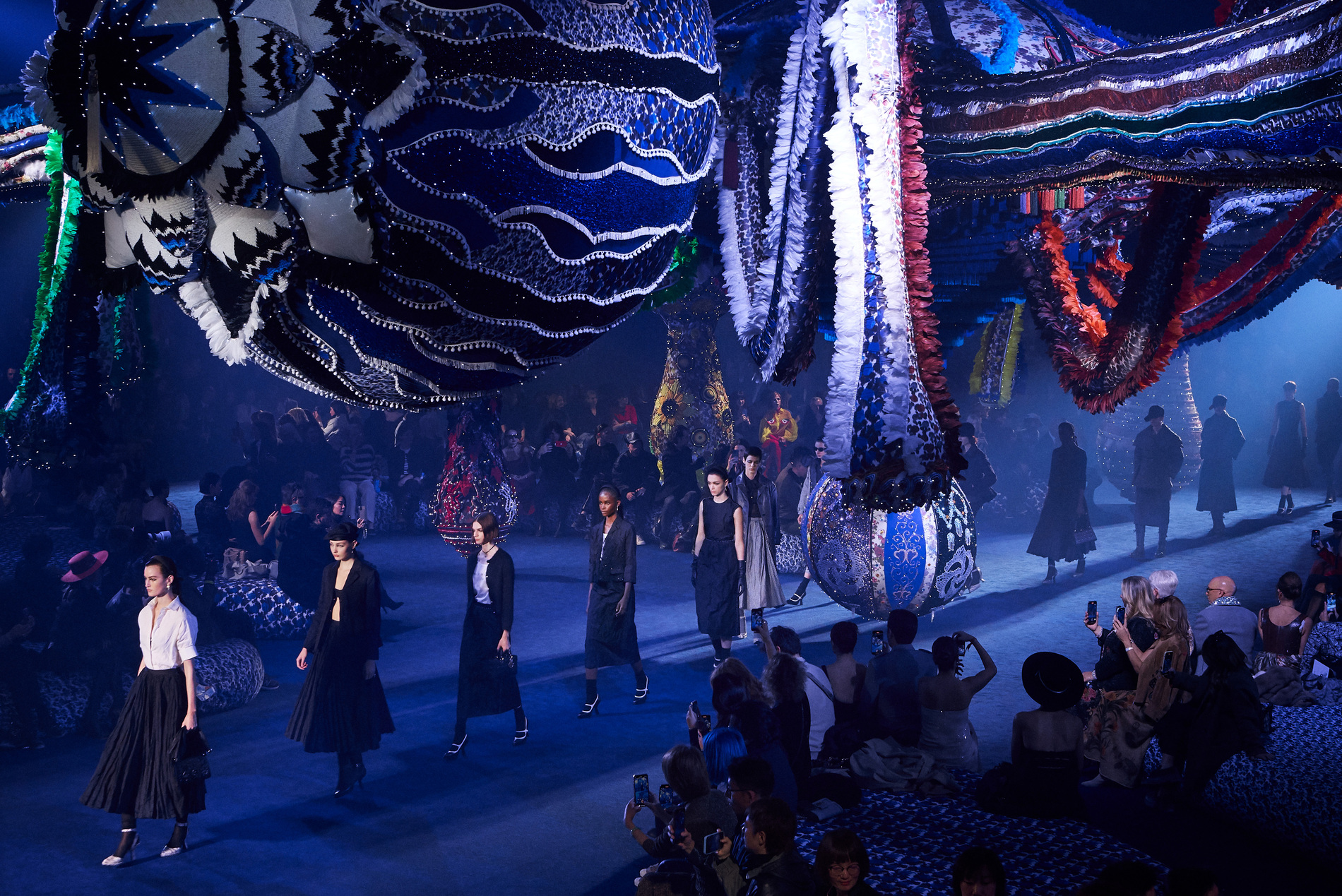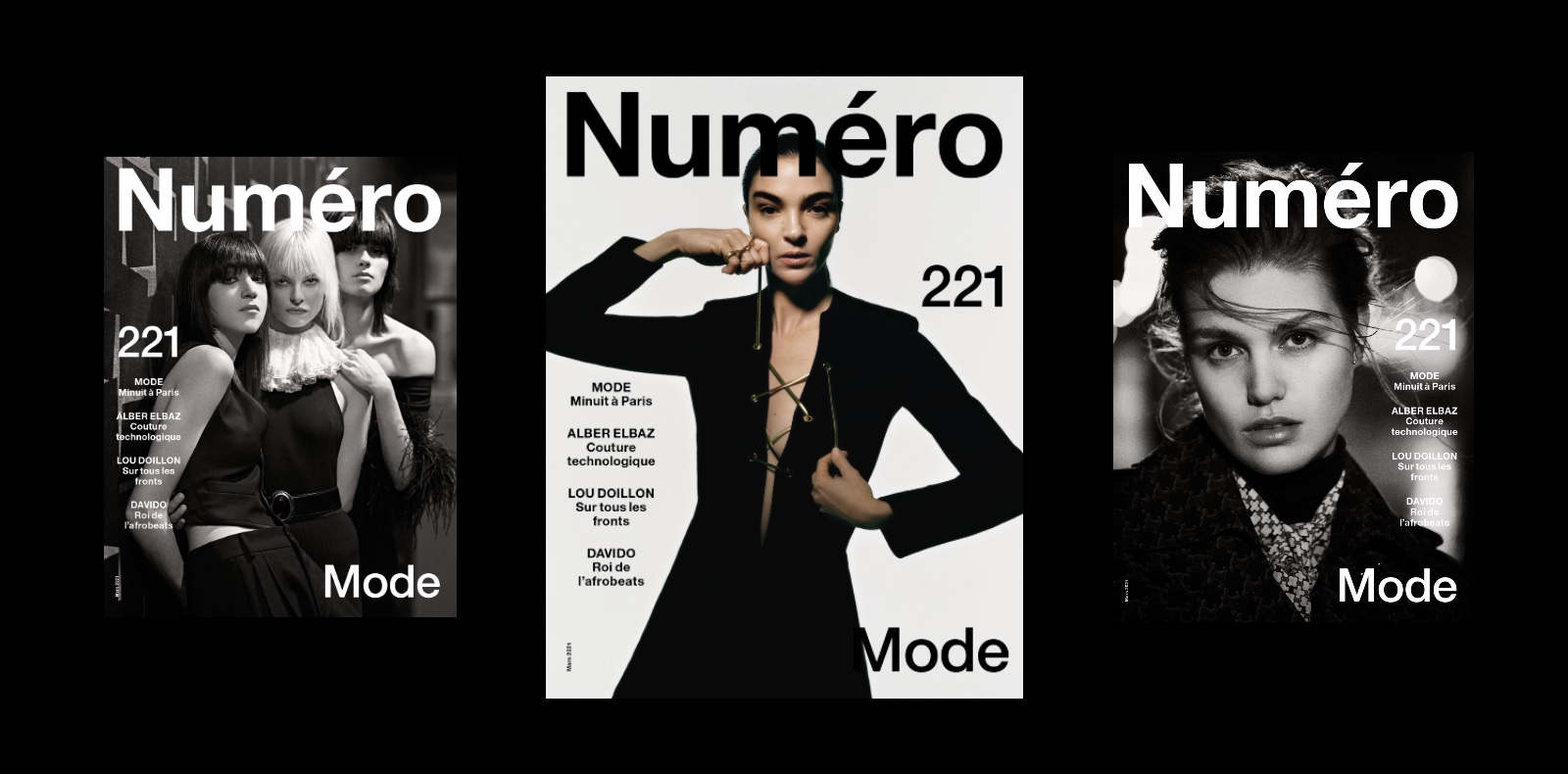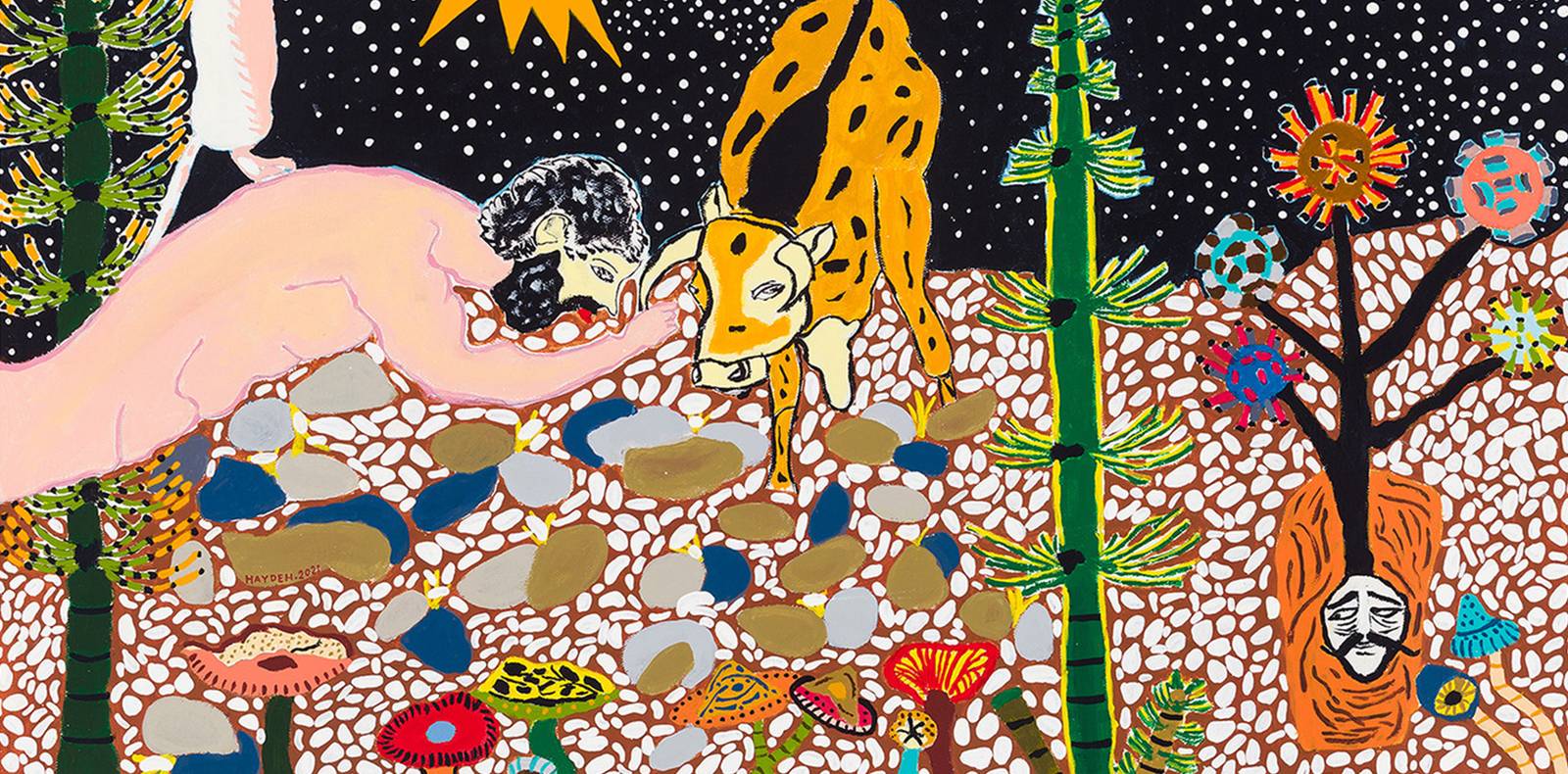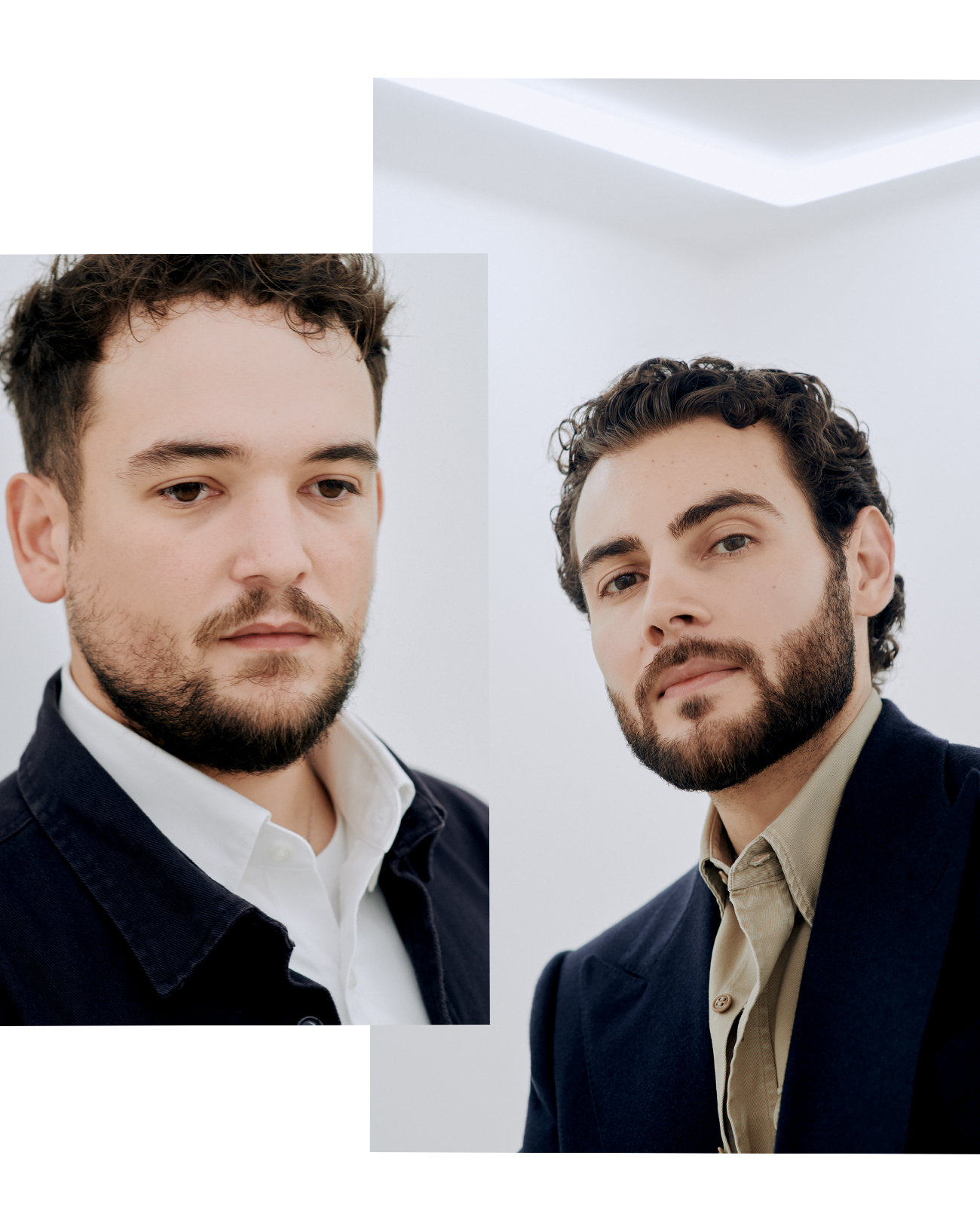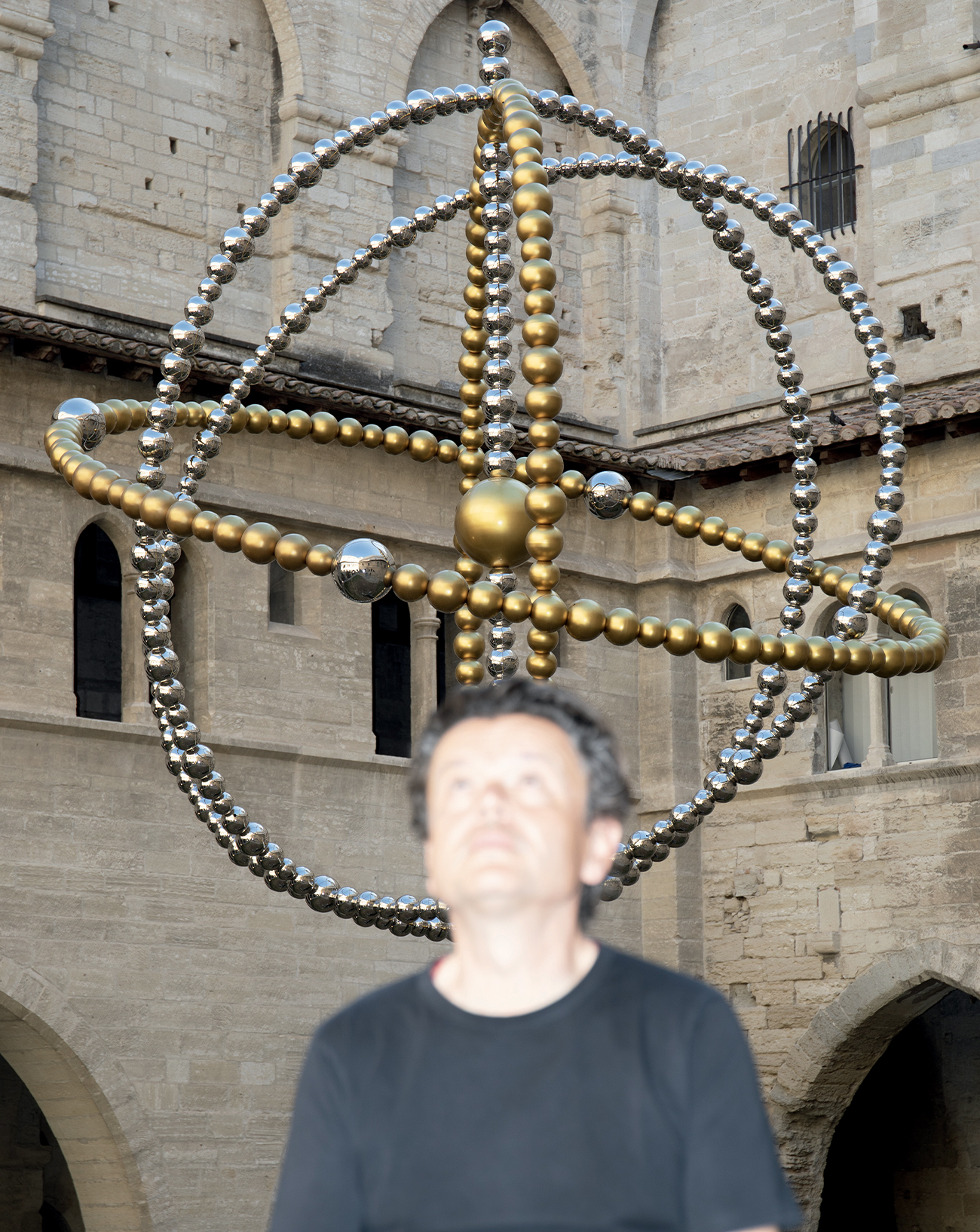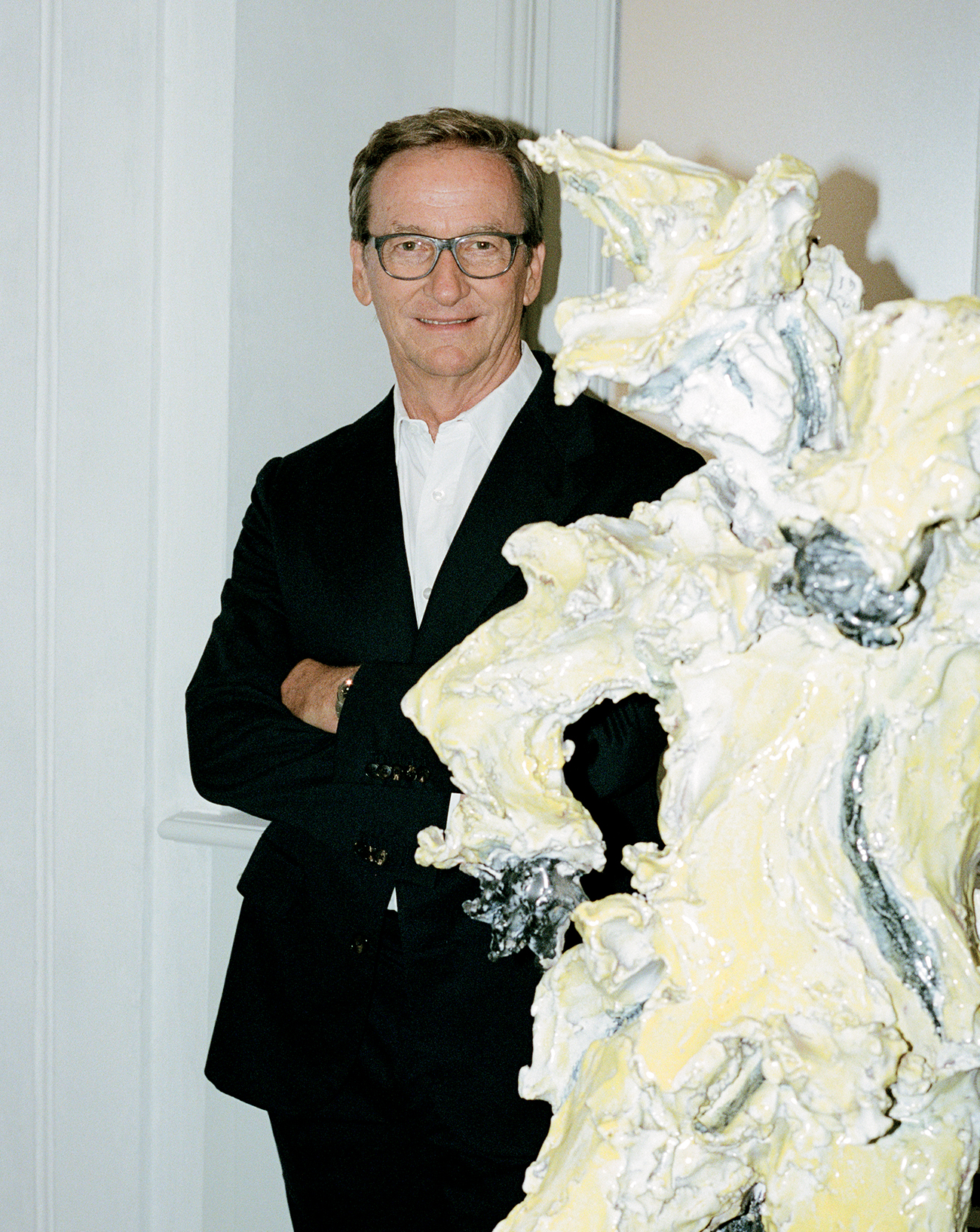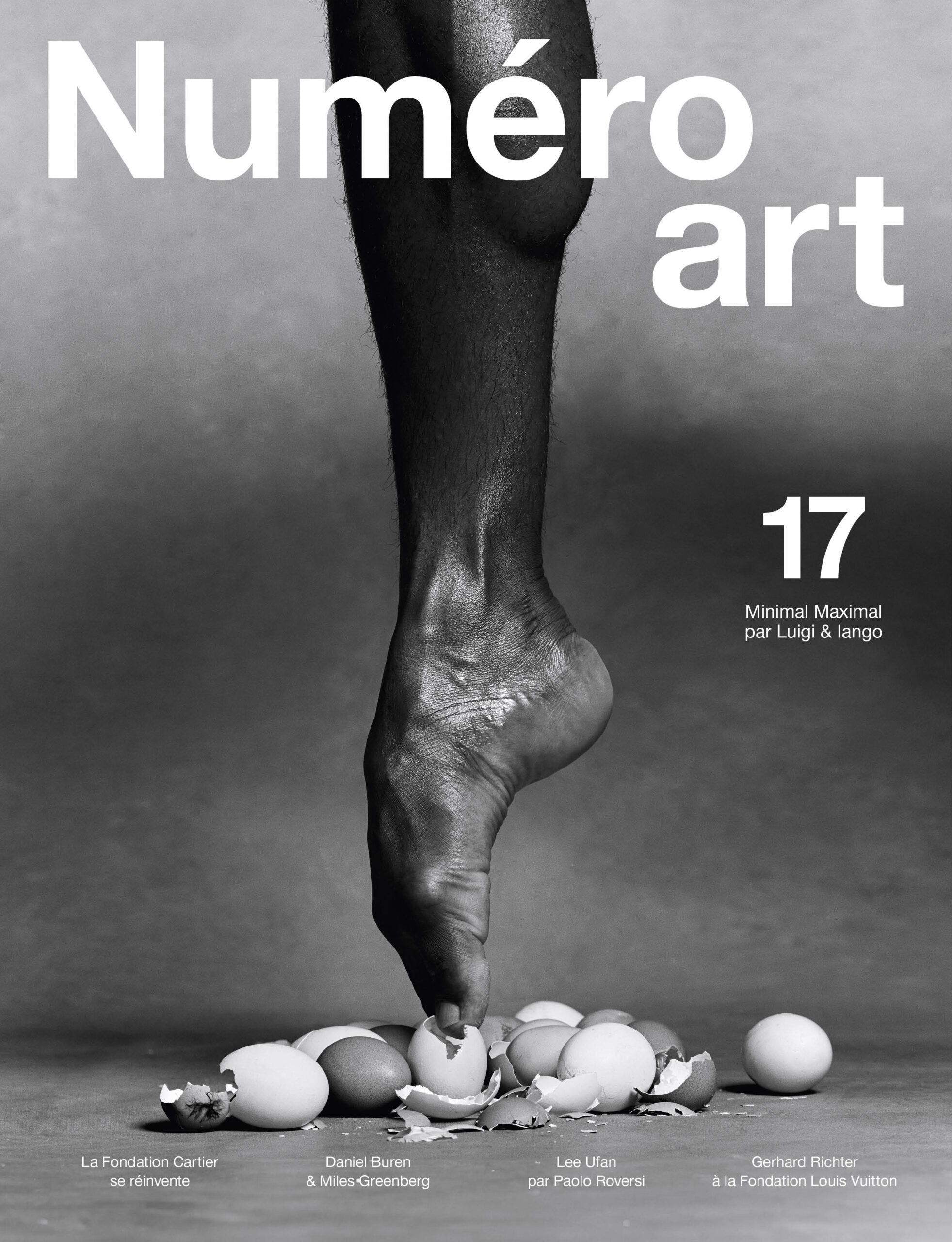
6
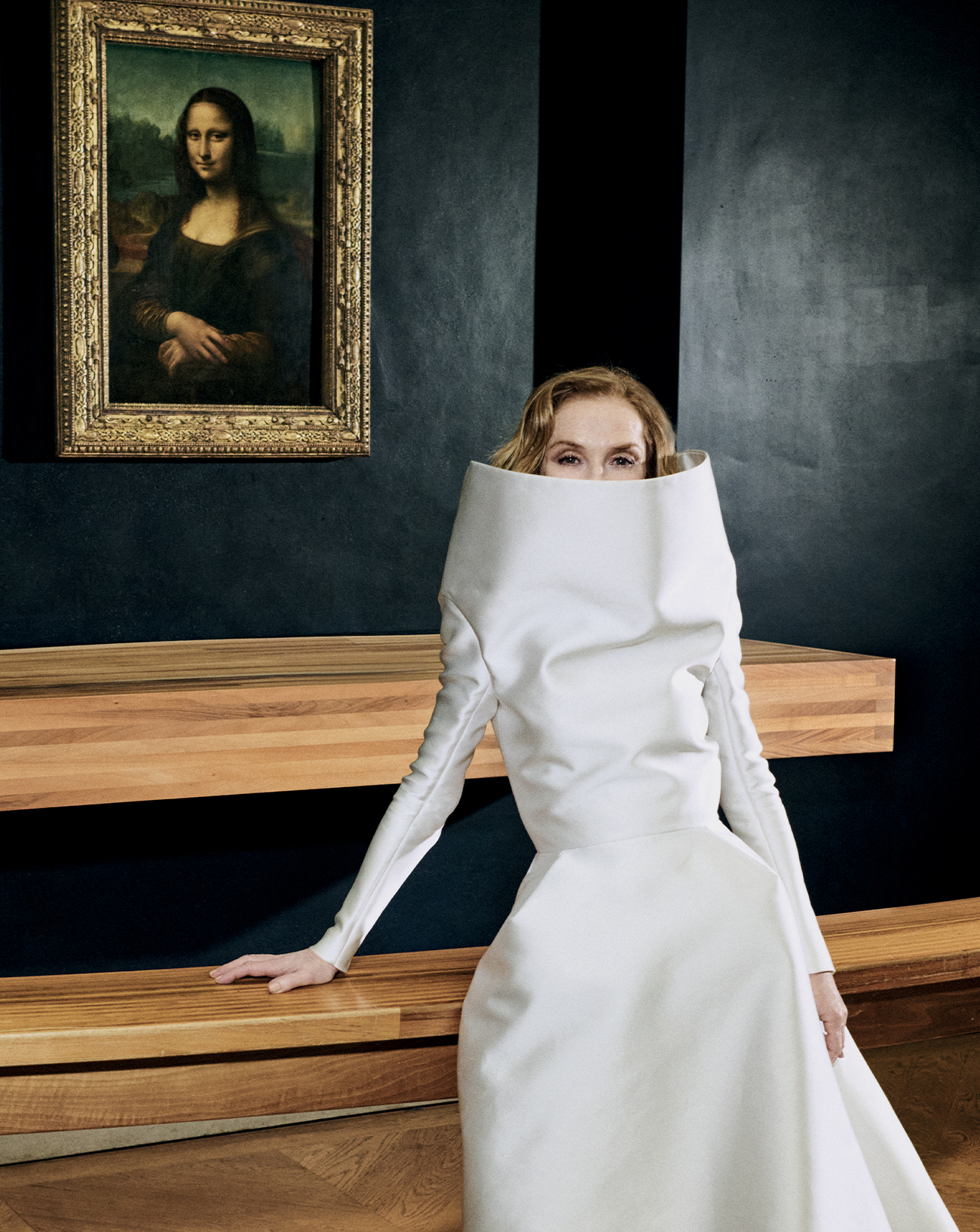
6
Interview with Isabelle Huppert at the Louvre for Numéro art
For this exceptional issue, the iconic French actress agreed to join Numéro art at the Louvre to revisit some of the museum’s most celebrated masterpieces. For this exclusive shoot, Isabelle Huppert entered into dialogue with the Mona Lisa, the Winged Victory of Samothrace, and the Vénus de Milo, metamorphosing, as only she can, into a gallery of striking, charismatic characters. The immensely talented actress is currently to be found on the big screen in Élise Girard’s Sidonie au Japon, and recently starred in Romeo Castelluci’s Parisian adaptation of Racine’s Bérénice. The ultimate actress, who can play absolutely any role, Huppert is at once glamorous and mysterious, free and audacious.
Couverture par Reto Schmid,
Stylisme par Natacha Voranger Thibaut Wychowanok.
Meeting with Isabelle Huppert in the Louvre Museum
Numéro art : Thinking about your relationship to art, one of your first major roles comes to mind, in the 1975 film Aloïse, where you played a schizophrenic painter living in a mental institution. What do you remember about that?
Isabelle Huppert : I cherish this film because it was indeed one of my first good roles. And it’s also special to me because it was directed by Liliane de Kermadec, who is no longer with us and who I loved very dearly. Liliane was one of the first to cast me. And the movie featured Delphine Seyrig too, though I didn’t really meet her when I was making the film – I just ran into her in the lobby of a hotel. She was going out as I was coming in, since I was playing the young Aloïse and she the adult Aloïse. The film also introduced me to art brut and to Dubuffet, who started the movement. I remember that, at the time, I got to see the big art brut collection in a place in the rue de Sèvres that wasn’t open to the public. I have very specific memories of those artists, who weren’t socially defined as such. One of them had dug holes into the walls of his cell using a teaspoon – wooden panels carved with a spoon. Every time I go to Lausanne, where the collection is now shown, I’m very moved. These artists shattered the narrative and challenged the norms – they were artists who didn’t know they were artists. Aloïse was schizophrenic – she spent 30 years in a psychiatric hospital. She painted using whatever she could get her hands on: huge pieces of craft paper that she fixed together with twine. She dreamed of becoming an actress and taking drama classes. In the film, she walks onto a stage and the director asks her a question. I don’t remember what the question was, but her answer went: “I’m not scared of a big empty stage. That’s not what scares me.” I’ve never forgotten that line.
You’ve worked with a lot with directors who are also considered major artists, such as Bob Wilson, for whom you’ll be performing in May in Mary Said What She Said in London, and also Romeo Castelucci, with whom you recently did Racine’s Bérénice.
Their ideas are sometimes misunderstood, like languages that simply aren’t comprehended. For me, they are languages to which I oppose no resistance, a form of playground, a space of freedom. It may seem constraining, because it’s true that I have to fit into a given form, but I don’t feel like I’m forsaking what constitutes the essence of my enjoyment and my nature as an actress. Not for a minute! Indeed quite the contrary, I’d say. From constraint comes freedom. Well, not always…
Are you particularly attracted by directors with a strong artistic vision?
I’m not only attracted by that. Theatre is such a broad field. I’m attracted by experiments. I can also do more classic theater – I just as greatly enjoy playing Florian Zeller’s The Mother in a form of theatre that is obviously completely unrelated.
With respect to Bérénice, Castellucci explained that he was trying to push a hardcore version of theatre. Do you share this ambition?
We all know that, most of the time, Romeo Castellucci likes to bring out all the most hardcore possibilities that theatre allows. It’s difficult to imagine him directing a bourgeois farce. We’re very lucky that France welcomes productions like his. It’s easier to get this kind of work off the ground here. You certainly wouldn’t see it in the United States, even though, historically speaking, there have been some very particular projects over there, such as with the Living Theatre [the experimental company founded in New York in 1947].
What have you taken away from your experiences with Wilson, who you’ll be working with again at London’s Barbican this May?
The first time I worked with him was in 1993 in Orlando. Then we did Heiner Müller’s Quartett, and finally Mary Said What She Said. Bob Wilson fundamentally changed the perception of time and space in theatre, as well as the relationship to the body. There was a before Bob Wilson and an after. And then there’s the light.
When doing movies, do you ask yourself a lot of questions about your character?
I’m embarrassed to say it… But actually, why should I be embarrassed? No, I never ask myself any questions. Neither before, during, nor after. I don’t ask myself any because I already know all the answers. The answers are brought to you over the course of making the movie. I think they already start to come the instant you decide to do the film. That’s the decisive moment! And from that point on, it’s like a very fine long thread that unwinds. Your thoughts begin to flow. In fact, cinema and theatre are just thoughts. They’re not really anything else. After that, there’s all the rest, of course, but first and foremost it’s thought, including unconscious thought.
In Sidonie in Japan, which had its theatrical release in early April, you play a writer grappling with the ghost of her husband during a trip to Japan. How did the director, Élise Girard, pitch the script to you? Is it the story of a love triangle with your husband’s ghost and your editor, with whom a relationship develops? Or is it a story about travel and the experience of an unknown elsewhere?
I’d say more the latter. It’s a film about sensations. I met Élise when she was shooting a movie with my daughter, Lolita Chammah. The film, Drôles d’oiseaux, was wonderful, and Lolita too. I don’t remember how Élise talked about our project, but I think she told me it would be shot in Japan. That conjured up a number of images, of course. It was only later that I learned about the story of the ghost and this writer, a woman who has to overcome a tragic event in her life.
The film sidesteps the usual clichés of bustling Japanese urbanity and instead takes us into astonishingly quiet, serene environments. That feeling is further enhanced by the major role that silence plays in the movie.
Yes, the cars are quiet, the crowds are quiet. During the day, that’s how people move around, very softly, even if a very lively nightlife is also shown in the film. Élise has a real talent for infusing all the poetry of the country. And also for filming silence, like the scenes in the car. All those very peaceful scenes, like in the cab, and the very eloquent silence between my character and her editor [played by the Japanese actor Tsuyoshi Ihara] are extremely moving. No sound disturbs their intimate inner journey, which mirrors the car’s journey.
Élise Girard plays with genres, blending fantasy with moments that touch on the burlesque. Your character often seems to be wandering around in a state of bewilderment, like something out of a Jacques Tati movie.
The film plays on contrasts. When I arrive at the airport in Tokyo, I’m met by the Japanese editor, and right away our difference in height is blindingly obvious. So the contrasts are ideal for burlesque. He walks very fast, and I have to run after him… It’s very funny. All that happened very naturally because it was induced by the situation. As an actress, I must say I have a good imagination: any situation can inspire me.
Your husband’s ghost appears and disappears very simply, without fancy visual effects. It all seems rather ordinary, as though he were coming back to life and then leaving the room.
Curiously, the more alive and visible he is, the more unremitting he becomes, like a rather evil invasive plant. He makes life, but it’s a rather lethal life, one that prevents Sidonie from living. And then, of course, the more he disappears, the more she feels grief. The great idea in the writing was not having a morbid ghost but rather a living ghost who is all the more destructive because he’s alive. In the end he disappears, and we understand that he’s freed up some space. Of course there are emotions and nostalgia, but the mourning is over. Sidonie can finally let someone else into her life. It’s the story of a rebirth.
Part of the film takes place on the island of Naoshima, which is home to some of the most beautiful museums in the world. Indeed we see you from the rear, looking at pictures by the Japanese photographer Hiroshi Sugimoto, which is an amusing nod to reality given that we know he took your portrait.
We would have liked to stay longer in Naoshima. That’s the disadvantage when you’re shooting – you’re not necessarily free to enjoy the places you visit. I wasn’t there as a tourist, I was there as an actress, meaning in a world of my own. You forget what’s around you – it’s kind of weird. But in Naoshima, the connection is so unique that it’s hard not to take notice
We’ve just spent the day in another museum, the Louvre. Do you like to spend time in art galleries?
They’re my first destinations when I arrive in a new city. I’ve had the opportunity to travel to a lot of places around the world and often, when I get there, I don’t know anyone or anything about where I am. I love shooting in those conditions. Left to my own devices, I won’t necessarily head off to the movies but rather to a museum. I have such vivid memories. As for the Louvre, I still haven’t visited it often enough. I’ve had some great times there – I remember some sublime paintings by Delacroix one particular morning… Most of all I recall saying to myself that what I was seeing through the windows was almost as beautiful as what I saw in the galleries.
What’s your relationship to the works themselves? What do you feel when you find yourself in front of the Mona Lisa, for instance?
The Mona Lisa? I guess we’re fascinated by the fascination she inspires. We no longer know if it’s hers or the entire world’s. You can look at her forever… It’s the way she gazes at you, of course. And her hands.
When you were being photographed at the Louvre, you immediately posed in relation to the paintings and sculptures around you, as though you yourself were the character that had been depicted.
There was a kind of mimicry. It was also a game – we were taking photos. The immobility of photography was ideal for reproducing the pose of the statue or painting. When I was in front of the Vénus de Milo, I thought about the position of my shoulders. In the Salle des Caryatides, I thought about Velázquez’s paintings – the big dress I was wearing had a lot to do with that. My hands just naturally placed themselves on the gown…
You also told me about your interest in contemporary art. For example, you curated a Robert Mapplethorpe exhibition at the Thaddaeus Ropac Gallery.
I was in Australia when Thaddaeus Ropac proposed the idea. He sent me the whole Mapplethrope archive, and I spent hours looking at it. And then I began to make a selection… Obviously, the reason you ask someone to do that is because each person sees something that maybe no one else did before. We all see according to our own sensitivity, or even our ignorance, I don’t know. So my inclination was towards Mapplethorpe photos we don’t see very often, including landscapes. They were completely claustrophobic – just trees, with no air around them at all. Landscapes like closed spaces.






